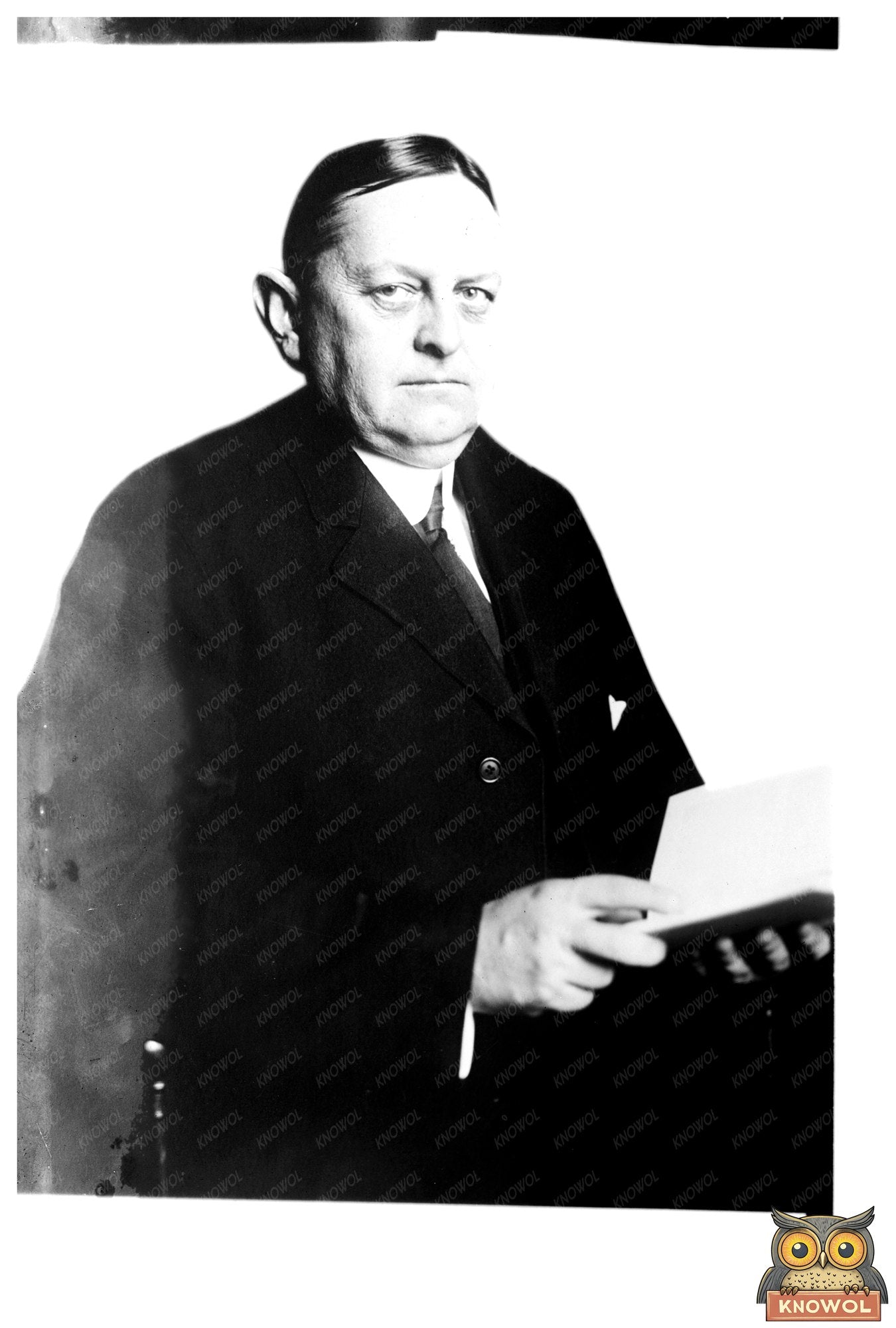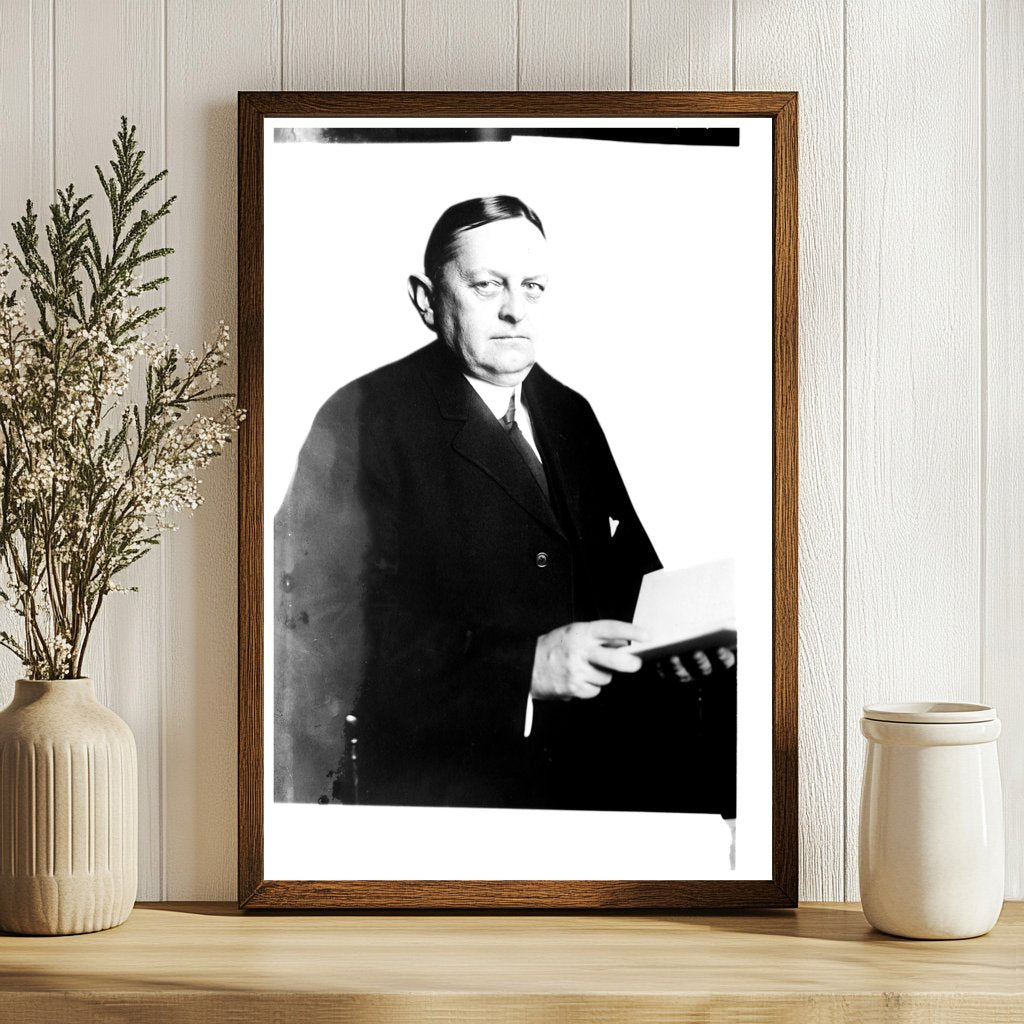


Early 20th Century Political Leader Portrait
This historical photograph features Oscar Underwood, a prominent political leader during the early 20th century. Serving as a U.S. Representative from Alabama, Underwood played a significant role in shaping American legislation through his work in Congress between 1911 and 1923. He is particularly noted for advocating tariff reforms and was instrumental in the passage of the Underwood Tariff Act of 1913, which lowered tariffs and reintroduced a federal income tax. This act marked a considerable shift in the economic policy of the United States, aligning with the progressive movements of the time.
Captured by the Bain News Service around 1910 to 1915, this image showcases early 20th-century photographic techniques. Glass negatives, like the one used for this photograph, were common before the widespread adoption of film, providing a rich level of detail and clarity. The medium’s historical significance also lies in its contribution to the documentation of public figures, allowing citizens to visualize their leaders in an era where printed images were becoming a vital part of communication and information dissemination.
Oscar Underwood’s legacy is etched not only in policy but also in the visual history captured in images like this one. They serve as a window into the past, allowing us to connect with the individuals and events that shaped modern America. Through his leadership and legislative achievements, Underwood exemplified the progressive spirit of his time, making this photograph an important artifact for understanding the political landscape of early 20th-century America.

Early 20th Century Political Leader Portrait
